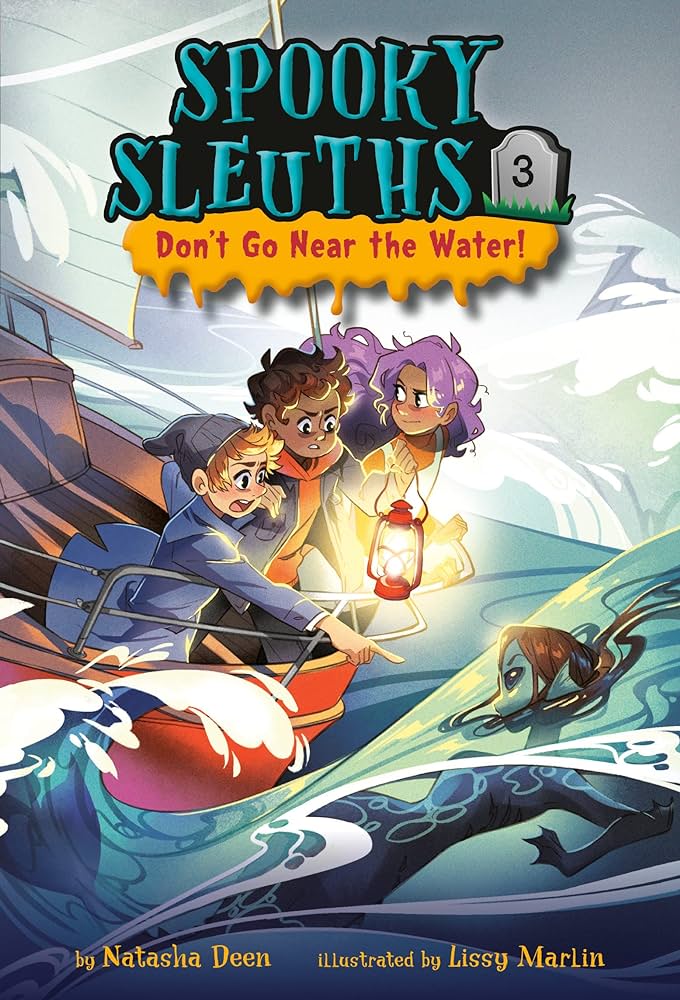Don’t Go Near the Water!

Don’t Go Near the Water!
I joined my friends Rokshar Kaya and Max Rogers near the water's edge. The building was behind us, but the mist hid it and made the morning damp and gray. Max shivered and pulled the collar of his coat close.
I shivered, too, but not because of the cold. Lion's Gate, Washington, was the spookiest place I'd ever lived! Strange lights shone in the sky, people disappeared into the mist- even the water was creepy. It was endless, and the fog made it impossible to see below its surface. Every wave seemed to roll closer, as if trying to catch hold of our feet and drag us under.
Asim, Rokshar, and Max are on a field trip to learn about the local ecosystem of Lions Gate, Washington, when they see something swimming beside their boat. Asim and Max are sure it is a woman. Rokshar argues they might have seen a seal, but it couldn’t be a person. While they are sorting out this mystery, their parent volunteers start to act in surprising ways, hearing music that the children cannot hear, while trying to jump into the ocean. Now the children have a new option for the face they saw in the water – could it have been a siren?
Don’t Go Near the Water! is the third book in the “Spooky Sleuths” series which is set in a town surrounded by dense fog, rolling ocean waves and housing a research facility called Eden Lab where the children’s parents work. Having scientists for parents influences the way the kids approach their mysteries. Instead of a detective notebook, they use scientific method, and many pages of the book include snippets of Asim and Rokshar’s journals. Readers can see how their hypothesis develops from the theory of mermaid to selkie, siren and then fairmaid. These notes and the conversations that the children have with their parents add context for the terms that they use to describe the woman as well as the ecological changes they see in the ocean.
The short chapters are accompanied by black and white drawings which show an outstanding variety of facial expressions from the children’s surprise when the creature first appears, their shock when the adults try to walk into the water, and their horror when the creature appears in the window of one of their houses. The creature morphs from monster to a convincing ocean researcher and then back to something that threatens them. Her long fingernails, webbed hands, and fangs are chilling, even in black and white.
The action-packed story heats up as the children zero in on the creature’s identity and discover that she is posing a threat to the adults who volunteered on the field trip, With the help of some of the other kids from the field trip, the three scientist detectives come up with a plan to force her to leave their community. The mystery is solved with a clever pun. Or is it? The book’s back matter includes summaries from Asim and Rokshar which have two different conclusions, thereby allowing readers to make up their own minds and look forward to the next entertaining mystery in the series.
Penny McGill is a library assistant in the Collections department of the Waterloo Public Library in Waterloo, Ontario.
